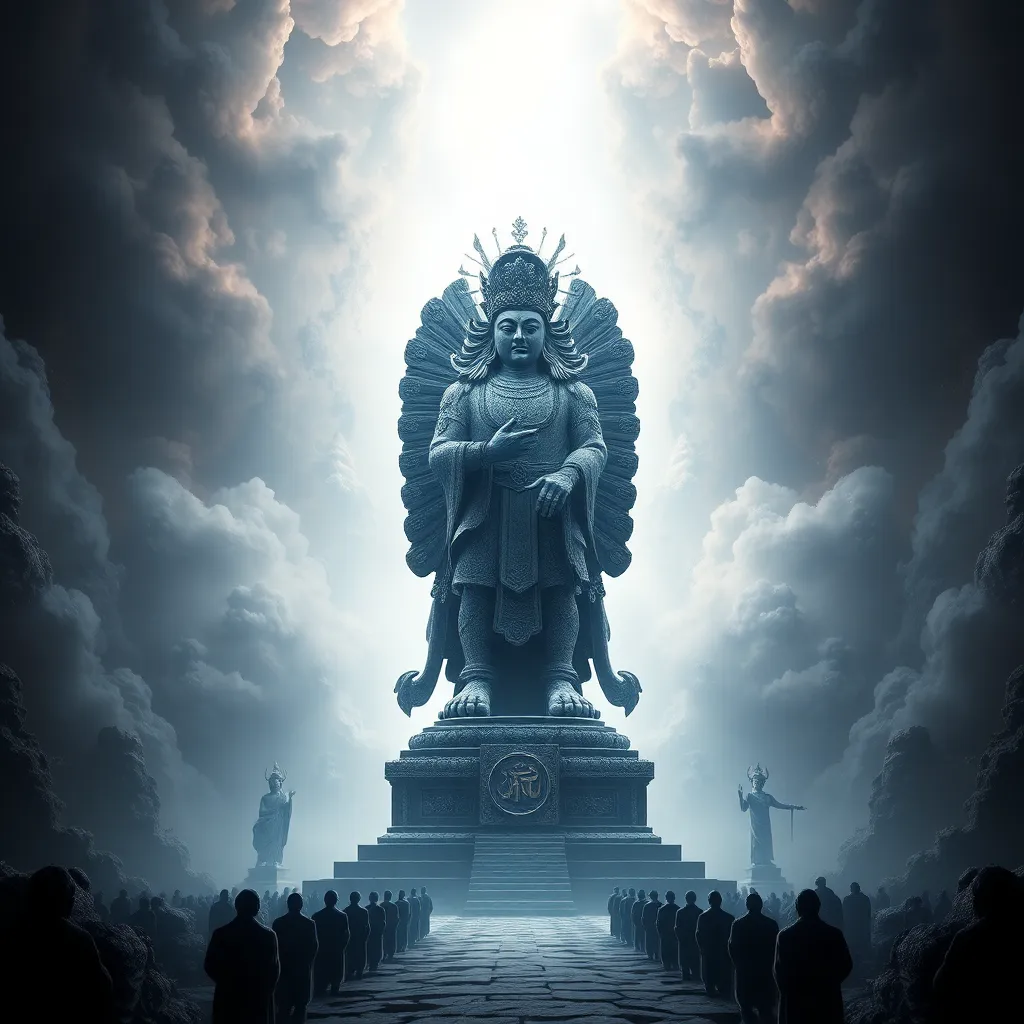The Ghosts of the Ganges: Exploring Indian Ghostlore
I. Introduction
The Ganges River, known as Ganga in India, is not only a lifeline for millions but also a river steeped in cultural and spiritual significance. Revered as a goddess in Hinduism, the Ganges represents purity, forgiveness, and a path to salvation. Its waters are believed to cleanse sins and facilitate a connection between the earthly and the divine.
In tandem with its cultural importance, India is a land rich in ghostlore—a tapestry woven from ancient beliefs, folklore, and local legends. Ghostlore reflects the collective consciousness of a society, often encapsulating its fears, beliefs, and moral lessons. This article explores the intertwining narratives of the Ganges and the ghosts that haunt its banks, delving into the historical, spiritual, and cultural dimensions of this unique aspect of Indian tradition.
II. Historical Context of Ghostlore in India
The origins of ghostlore in India can be traced back to ancient texts and scriptures, such as the Vedas and Puranas, which reference spirits and supernatural beings. These texts illustrate a historical context where the supernatural was an integral part of everyday life, influencing rituals, moral codes, and community beliefs.
Regional beliefs and practices have played a significant role in shaping ghost stories across India. For instance, the folklore from the northern states may differ drastically from that of the southern states, reflecting local customs, languages, and spiritual practices. Over centuries, ghostlore has evolved, adapting to changing societal norms and cultural influences.
III. The Ganges River: A Spiritual and Supernatural Hub
The Ganges holds a revered status in Hinduism, often referred to as the ‘Mother Ganga’. It is the river where millions come to perform rituals and seek spiritual solace. The sacred waters are believed to wash away sins and assist in the journey of the soul after death.
Along its banks, various rituals are performed, including:
- Cremation ceremonies where the ashes of the deceased are immersed in the river.
- Spiritual cleansing rituals conducted by devotees seeking purification.
- Festivals celebrated along the river, drawing thousands to its shores.
This intersection of life and death creates a unique atmosphere where the supernatural becomes palpably present. The spirits of those who have been cremated or have passed near the Ganges are believed to linger, creating a rich tapestry of ghostly narratives intertwined with the river’s sacredness.
IV. Notable Ghost Stories Associated with the Ganges
Among the myriad ghost stories associated with the Ganges, tales of spirits known as Bhoot and Pret are particularly noteworthy. These spirits are often believed to be the souls of the deceased who have not found peace.
Local legends abound, detailing haunted ghats (riverbanks) where shadows are said to roam and whispers fill the air. Notable haunted locations include:
- Manikarnika Ghat: The most famous cremation ghat in Varanasi, known for its high frequency of ghost sightings and eerie encounters.
- Assi Ghat: Associated with stories of a woman who drowned and now wanders the riverbanks.
Personal anecdotes from locals further enrich these stories, with many recounting experiences of mysterious encounters or unexplained happenings along the river, adding to the mystique of the Ganges.
V. The Influence of Colonialism on Indian Ghostlore
The arrival of British colonialism brought with it Western ghost stories and folklore, which began to influence and blend with Indian narratives. The adaptation of these stories into the local context created a unique hybrid of ghostlore.
British literature, with its gothic themes and supernatural elements, inspired Indian writers and storytellers to incorporate similar motifs into their own ghost stories. For instance:
- Ghostly apparitions in colonial-era buildings, often linked to tragic historical events.
- Stories of spirits seeking revenge for injustices faced during the colonial rule.
These case studies highlight how colonial influences have shaped modern ghost narratives in India, creating a rich and diverse folklore landscape.
VI. The Role of Ghosts in Contemporary Indian Culture
In contemporary India, ghostlore has found new life in various forms of media, including films, literature, and art. The Bollywood film industry has explored themes of the supernatural, often drawing inspiration from traditional ghost stories, which resonates with audiences and reflects societal fears.
Furthermore, there is a resurgence of interest in paranormal tourism along the Ganges. Tourists and locals alike are drawn to the haunted sites, seeking to experience the supernatural firsthand. Ghost tours and storytelling sessions have become popular, blending entertainment with cultural education.
Ghosts in modern narratives often serve as reflections of societal fears and anxieties, addressing issues such as loss, injustice, and the unknown. They act as metaphors for unresolved conflicts within society, making ghost stories a relevant and poignant aspect of contemporary culture.
VII. Spiritual Practices and Beliefs Surrounding Ghosts
In Indian culture, there are various rituals aimed at appeasing spirits and preventing hauntings. These practices are often rooted in the belief that the souls of the departed require guidance and support to find peace.
Key aspects of these spiritual practices include:
- Rituals performed by priests to conduct shraadh (rituals for the deceased) to ensure peace for the departed souls.
- The role of shamans and spiritual healers who mediate between the living and the spirit world.
- Offerings made at sacred sites, including food, flowers, and incense, to honor and remember the dead.
These practices highlight the significance of remembrance and respect for the departed, showcasing how they are interwoven with the living’s spiritual journey.
VIII. Conclusion
The intricate relationship between ghostlore and the Ganges River embodies the rich tapestry of Indian spirituality and culture. The river serves as more than just a physical entity; it is a connector of life and death, reality and the supernatural.
The fascination with Indian ghost stories continues to thrive, reflecting the cultural importance of these narratives in understanding societal values and fears. As we explore the depths of ghostlore along the Ganges, we uncover not just tales of the supernatural, but also insights into the human condition and our quest for meaning beyond the mortal realm.



